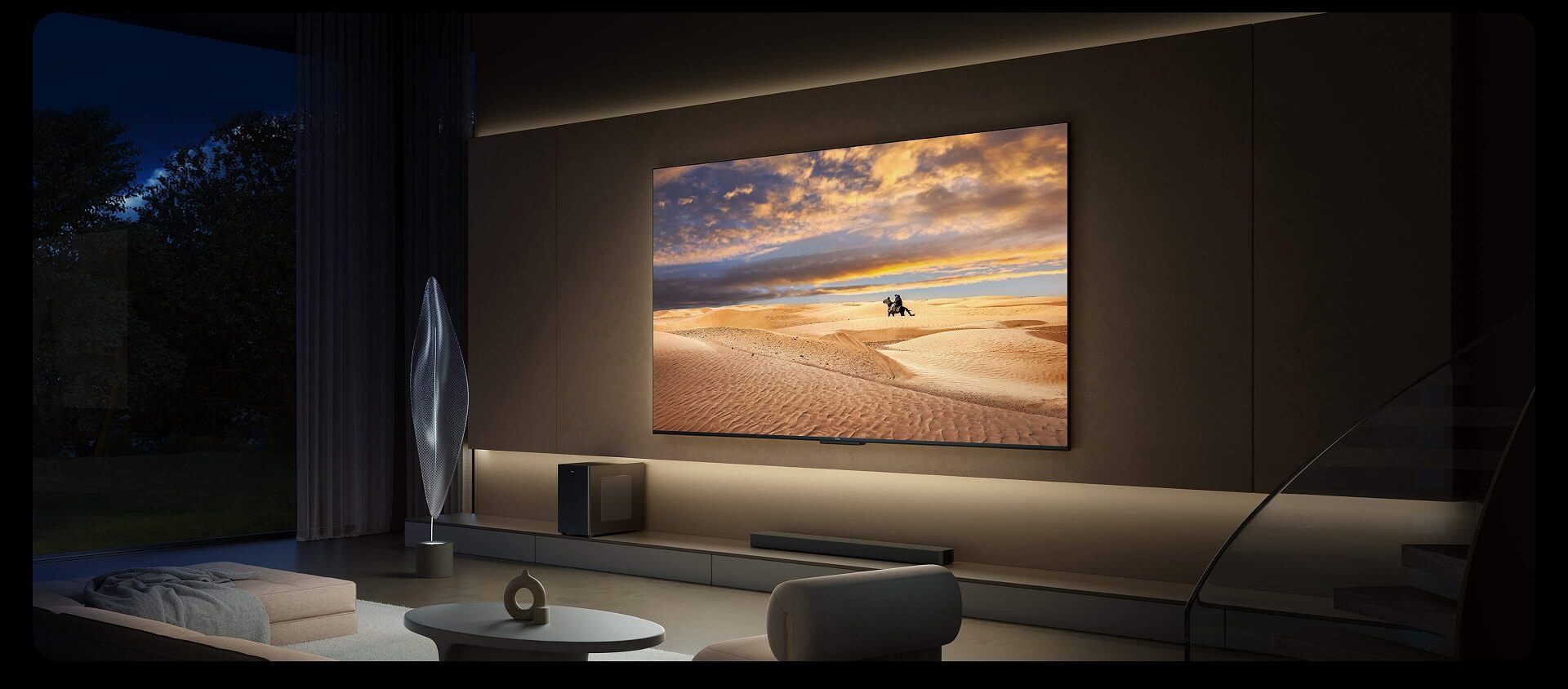Sharing your screen seamlessly from your Mac to your TV opens up a world of possibilities for entertainment, productivity, and collaboration. Whether you're looking to enjoy your favorite movies and videos on a larger screen, share presentations for work or school, or simply mirror your Mac's display for easier viewing, screen sharing offers a convenient solution. In this article, we will show you how to screen share from Mac to TV via three easy methods, helping you create a more immersive and interactive experience.
What is screen sharing and how does it work?
Screen sharing is a technology that broadcasts the content of one device's screen to another over a network, facilitating real-time collaboration and communication. This technology is widely used in various settings such as remote work, online meetings, educational sessions, and technical support, where sharing visual information promotes effective communication.
Screen sharing operates by capturing the graphical output (display) of a host computer and transmitting it over the internet or another network to one or more participants' devices. This process typically involves compression to reduce the bandwidth required for transmitting high-resolution content in real time.
How to screen share from MacBook to TV?
Transitioning content from your MacBook to your TV opens up a broader view of everything from presentations to movie nights. Here’s how you can mirror or extend your MacBook screen to a TV using three methods, depending on your needs and available equipment.
Method 1: Using AirPlay for screen sharing
AirPlay is a feature specific to Apple devices that allows users to wirelessly stream videos, photos, and music from their Apple devices to smart TVs. This method is particularly useful in environments where quick, wireless presentation or streaming is needed from an iPhone, iPad, or Mac, making it ideal for both home entertainment and professional presentations.
1. Ensure compatibility: First, check that both your MacBook and TV support AirPlay.
2. Connect to the same Wi-Fi network: Both your MacBook and the TV must be connected to the same Wi-Fi network to communicate with each other.
3. Enable AirPlay on your TV: On your TV, navigate to the settings and ensure that AirPlay is turned on. This might be under a general settings or network settings menu.
4. Use the AirPlay icon on your MacBook: Click the AirPlay icon in the menu bar at the top of your screen. If the icon isn’t visible, go to Apple Menu > System Preferences > Displays and check the box for "Show mirroring options in the menu bar when available."
5. Select your TV: From the list of available devices, select your TV. You may be asked to enter a code that appears on your TV screen into your MacBook to establish a secure connection.
6. Adjust display preferences: Once connected, you can choose to mirror your MacBook’s screen or use the TV as a separate display. Adjust resolution and scaling options to optimize the viewing experience.
Method 2: Wireless screen sharing to smart TVs
If your TV doesn’t support AirPlay, there is another alternative method for screen sharing to smart TVs - Google Cast. While not natively supported on macOS, you can use Google Cast from a MacBook with the help of third-party applications. Apps like AirParrot allow Mac users to cast their screens to devices that support Google Cast.
1. Check for native support: Ensure that your smart TV supports Google Cast. Most newer TVs like TCL C655 have this feature built-in, or you might have a Chromecast device connected to your TV.
2. Connect devices to the same network: Make sure that both your MacBook and the smart TV are connected to the same Wi-Fi network. This is essential for the casting to work.
3. Install AirParrot: Visit the AirParrot website and download the AirParrot application for Mac. Follow the installation instructions to install AirParrot on your MacBook.
4. Setup AirParrot: Open AirParrot on your MacBook after installation. You’ll see an icon appear in the menu bar at the top of your screen. Click on this icon to open the AirParrot menu.
5. Select your TV: In the AirParrot menu, look for the "Devices" section which lists all available devices you can cast to. Select your smart TV from the list. If you don't see your device, ensure it's turned on and connected to the same network as your MacBook.
6. Choose what to cast: AirParrot allows you to choose whether to mirror your entire MacBook screen or just extend your desktop. You can also choose to stream only a specific application window instead of the entire screen.
7. Adjust settings: Within AirParrot, you can adjust the quality and resolution of the stream. If you experience lag or performance issues, lowering the quality can help.
Method 3: Wired connection via HDMI cable
Using an HDMI cable to connect your device directly to your TV is one of the most reliable methods for screen sharing. This wired connection ensures stable video and audio transmission with minimal latency, making it ideal for gaming, watching high-definition movies, or any situation where maintaining high-quality output is crucial.
1. Prepare the necessary cable: You’ll need an HDMI cable and, if your MacBook doesn’t have an HDMI port, an appropriate adapter (like a USB-C to HDMI adapter for newer MacBook models).
2. Connect the HDMI cable: First, connect the HDMI cable to your TV, then attach the other end to your MacBook via the adapter if necessary.
3. Select the input source on your TV: Turn on your TV and switch to the HDMI input that corresponds to the port you are using.
4. Configure display settings on your MacBook: Once connected, your MacBook should automatically detect the TV. You can adjust display settings such as resolution and scaling by going to System Preferences > Displays.
5. Adjust sound output: If you want the sound to come from your TV, go to System Preferences > Sound and select your TV as the output device.
Conclusion
Knowing how to screen share MacBook to TV offers a convenient way to share content and enhance your viewing experience. Whether you prefer wireless methods like AirPlay, using brand-specific apps for smart TVs, or a reliable wired connection via HDMI cable, there are various options to suit your needs. With screen sharing magic at your fingertips, the possibilities for collaboration and entertainment are endless.

QLED vs. UHD: Which TV Technology is Best?
2025-04-09

What AC Type is Used in Offices?
2024-12-19

How to Connect Universal Remote to TV?
2024-09-27

YouTube on TV Not Working, How to Fix?
2024-09-20

How to Watch Apple TV on Smart TV
2024-09-20

Discover the Best Washing Machines for 2024
2024-09-12

How to Measure a TV Screen for Perfect Fit?
2024-08-16

How to Clean Air Conditioner Drain Line?
2024-08-01

What is a backlight in an LED TV?
2024-06-18

How To Remove Lint From Clothes Washing Tips
2024-05-24

How Does The Refrigeration Cycle Work?
2024-05-10

How Does VPN Work On Smart TV
2024-05-10

How to Watch Free Live TV on Android TV
2024-05-06

How to Reset Your Air Conditioning Unit
2024-04-25

How to Open A Locked Washing Machine Door
2024-04-10

How To Get Disney Plus On TV: A Easy Guide
2024-04-10

Set Up Your OK Google Device On Your TV
2024-04-08

How To Adjust Your TV Picture to Fit Screen
2024-04-03

How To Convert Your LED TV To A Smart TV
2024-03-01

Tablet Vs Laptop – Which Should You Buy?
2023-11-24

How To Play Games On Smart TV
2023-11-16

How To Level A Washing Machine in Easy Steps
2023-11-11

How To Dispose Of An Old Refrigerator Safely
2023-10-29

How to Mount a TV on the Wall in Easy Steps
2023-10-14

Why Is My AC Not Blowing Cold Air? Easy Fix
2023-09-29

How To Wash Shoes In The Washing Machine
2023-09-28

How To Clean Your TV Screen In 6 Easy Steps
2023-09-26

3 Easy Methods on How To Reset your Tablet
2023-09-14

Dolby Digital Vs DTS: What's The Difference
2023-08-26

Washing Machine Capacity And Load Size Guide
2023-07-26

Ac Leaking Water? Here's How You Can Fix It!
2023-07-22

How To Take Care of a Cracked Phone Screen
2023-07-18

Who Invented Television: History of TV
2023-06-28

10 Smart Tips For More Organized Fridge
2023-06-16

Top 5 Best Browsers for Android TV
2023-05-20

How to Recover Deleted Photos on Android
2023-05-18

What Are the Big Changes for TCL TV in 2022?
2022-09-08

How TCL Smart TVs Enhance Your Life?
2022-08-10

Connection Guide For Your TCL SmartV TV
2021-03-17

Buying a TV? Which TV Should You Buy?
2021-03-17

Which Size TCL TV Is Best for You? | TCL UAE
2021-03-17

QLED v.s. OLED: Which one is better?
2021-03-17
Copyright © 2025 TCL. All Rights Reserved.
This site uses cookies to analyse site traffic, improve your experience and personalize ads or other contents. By clicking Accept or continuing to browse the site, you are agree to our use of cookies. See our Cookies Policy here. Learn more


































































































.jpg?t=1702449223212&w=592)







































































































